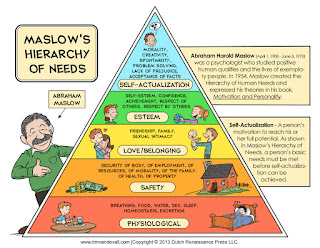Are you Experiencing the Internal Labor Market of your Organization?
Internal labor market is where an organization selects suitable employees to fill up vacancies arising within the organization through a promotion process. Whereas external labor market is the process of recruiting external candidates to fill up vacant positions within the organization.
An organization focused on promoting internal labor market will be considering candidates which makes a fit with the organization or are engaged with the organization on its initial recruitment process at the lower level of the organizational hierarchy. Personality tests such as Myers- Briggs Type Indicator (MBTI) etc. would be used to identify the suitability of the candidate with the organization. This goes far beyond the traditional HRM approaches where a candidate is matched up mainly against the job description, and then the person selected or rejected. In SHRM (SHRM defined as "an approach to the development and implementation of HR strategies that are integrated with business strategies and supports their achievement" (Armstrong, 2014)) the candidates would be matched up against the strategy of the company, and recruited only if the candidate's personal needs and aspirations align with the company. The candidate may not be the best fit for the open vacancy but would be useful for the organization in the future to fill up a key role in the organization. This is a long term approach.
 Some Examples
Some Examples
We see many Japanese organizations promoting the internal labor market, where we see a high level of employee engagement with the organizations. In contrast, United States is believed to have a shorter employee life cycle within the organization, thus promoting external labor market. Thus, we can see that the culture also does have a say in organizations selecting their job placements to be of internal labor market or external labor market. (Modo Labs, nd)
Benefits of Internal Labor market in an Organization
1) Employees within the organization experience Job Security2) Reduced Turnover
3) Increased Employee Engagement
4) Results in a Specialized Workforce
5) Increased Productivity
Drawbacks of Internal Labor market in an Organization
1) Should focus and put in more effort in the recruitment of bottom level employees to select the right candidates2) Barriers to obtain the services of possibly more skilled professionals since the high level career opportunities are not provided for the external market.
3) Should contain strong and transparent policies on appraisals, promotions etc.
4) IN internal labor market where many job ladders are available, the individual would have opportunities limited to the particular job ladder.
5) Highly skilled employees may be demanding since they cannot be replaced easily.
It is essential for organizations o examine both job placement options, and adapt the most suitable method into their organization. However, from the internal employee's point of view, the internal labor market would be a great relief, and a huge motivation factor to provide a great employee experience to them.
References
Imaze (no date) The Great Pacific
Garbage Patch [online] Available from https://www.emaze.com/@AZIOQRQC/The-Great-Pacific-Garbage-Patch [Accessed
18 December 2017]
Modo Labs( no date) Internal
Labor Markets [online] Available from http://career.iresearchnet.com/career-development/internal-labor-markets/ [Accessed
18 December 2017]


















